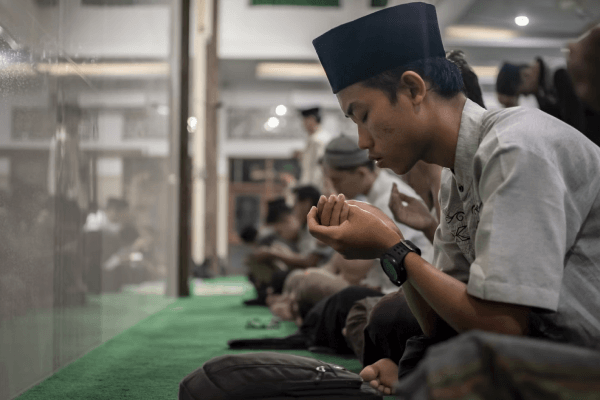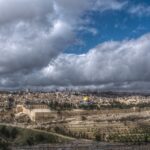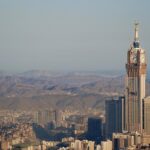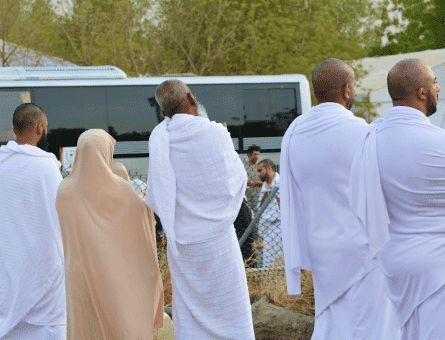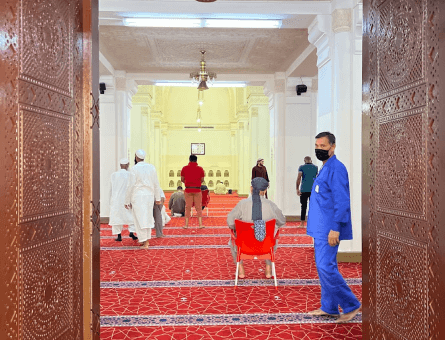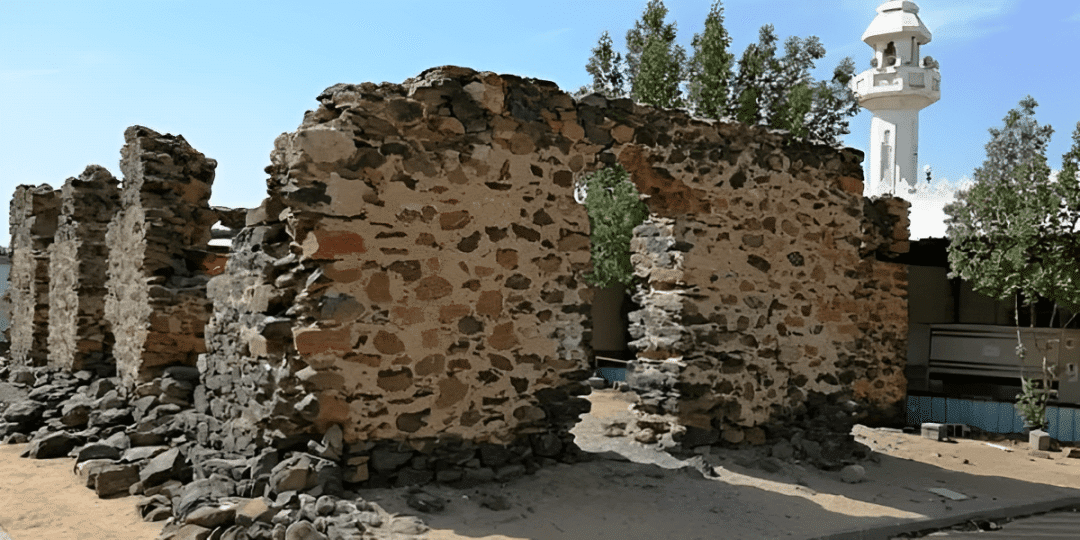Masjid Al-Hudaibiyah – Everything you need to know
The holy city of Makkah is home to several historical mosques, each of which has played a significant role throughout Islamic history. While almost every Muslim knows about the great Masjid Al-Haram which encircles the heart of Islam, the Holy Kaaba, very few people know that on the outskirts of the sacred city lies Masjid Al-Hudaibiyah – the mosque that marks the location where the 10-year peace treaty, the Treaty of Hudaibiyah, was signed between Prophet Muhammad (PBUH) and the Quraysh of Makkah.
Still standing strong and tall, the historical Masjid Al-Hudaibiyah today serves as a focal point for pilgrims. Here is everything you need to know about the significance of the Treaty of Hudaibiyah and Masjid Al-Hudaibiyah in Islam.
What Is Masjid Al-Hudaibiyah?
Situated on the outskirts of the sacred city of Makkah, Masjid Al-Hudaibiyah marks the spot where the peace treaty of Hudaibiyah was signed between the Quraysh and Prophet Muhammad (PBUH) in 6 AH. Even though most of the terms of the 10-year treaty were in favour of the Quraysh, it gave Prophet Muhammad (PBUH) and his companions the opportunity to come back the following year and perform the first pilgrimage.
Otherwise known as “Al-Syumaisi,” today, Hudaibiyah also functions as no less than a Miqat for pilgrims (Hajj and Umrah) who intend to enter the state of Ihram. The new structure of Masjid Al-Hudaibiyah is built right next to the ruins of the old mosque.
Where Is Masjid Al-Hudaibiyah Located?
Masjid Al-Hudaibiyah is located on the old Jeddah road in an area known as Al-Shumaisi, near the city of Makkah, Saudi Arabia. Masjid Al-Hudaibiyah is approximately 24 kilometres from Masjid Al-Haram (Grand Mosque).
What Was the Treaty of Hudaybiah?
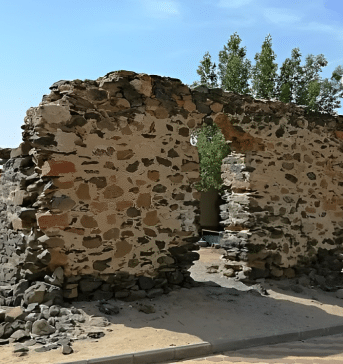 After residing six years in Madinah, one night, Prophet Muhammad (PBUH) dreamed that he entered Makkah and performed Tawaf around the Holy Kaaba. The moment the Messenger (PBUH) of Allah SWT told his companions about his dream, they were excited and delighted as all of them missed their hometown (Makkah) and longed to perform Tawaf around the Holy Kaaba.
After residing six years in Madinah, one night, Prophet Muhammad (PBUH) dreamed that he entered Makkah and performed Tawaf around the Holy Kaaba. The moment the Messenger (PBUH) of Allah SWT told his companions about his dream, they were excited and delighted as all of them missed their hometown (Makkah) and longed to perform Tawaf around the Holy Kaaba.
Realising that the dream was actually a sign from Allah SWT, Prophet Muhammad (PBUH) along with 1400-1500 Muslims wore the Ihram and left for Umrah on Monday, the 1st day of Dhul Qadah 6 AH. The Muslim caravan also took with them animals for sacrifice.
In order to examine the route, Prophet Muhammad (PBUH) sent a group of scouts led by Abbad Ibn Bishr (RA). On being informed that the Quraysh had misinterpreted the Muslim caravan as an army, Abbad Ibn Bishr (RA) rushed back to Prophet Muhammad (PBUH) and told him, “O Rasulullah, Quraysh have heard of your arrival and have gone forth dressed in tiger skins, with all their camels, and have settled in Dhi-Tawa or Baldah – they have vowed that they will not let you enter Makkah.”
Prophet Muhammad (PBUH) then asked Usman (RA) to go and try to convince the Quraysh that they had come only to perform Umrah and invite the residents of Makkah to Islam.
However, Usman (RA) remained in Makkah longer than the believers had expected him to, so a rumor spread that the scout of the Muslims had been killed. Prophet Muhammad (PBUH) then called for an allegiance under the acacia tree pledging that the Muslims would fight for the blood of Usman (RA).
However, Usman (RA) turned up, and the believers did not need to go to battle. Allah SWT then revealed the following verse referring to the “Pledge of Rizwan:”
“Allah was pleased with the believers when they swore allegiance unto you beneath the tree.” [Holy Quran 48:18]
The Quraysh had sent Suhayl ibn ‘Amr to negotiate. As soon as Prophet Muhammad (PBUH) saw him coming, he remarked, “It is clear that they want peace since they have sent this man.” The Messenger (PBUH) of Allah SWT then instructed his companions to draft an agreement.
He called Ali (RA) and told him, “Write: In the name of Allah SWT, the Merciful, the Compassionate.”
“By Allah,” Suhayl said, “we do not know who this Merciful is. Rather write ‘In your name, O Allah'”.
On hearing this, the Muslims replied, “By Allah SWT, we will only write, ‘In the name of Allah SWT, the Merciful, the Compassionate.'”
The Prophet Muhammad (PBUH) then repeated, “Write, ‘In Your name, O Allah SWT.'”
Then he said, “Write, ‘This is what Muhammad, the Messenger (PBUH) of Allah SWT has agreed.’”
“By Allah,” retorted Suhayl, “if we accepted that you were the Messenger (PBUH) of Allah SWT, we would not have prevented you from reaching the House of Allah or fought you. Rather write, ‘Muhammad ibn ‘Abdullah.'”
Prophet Muhammad (PBUH) said, “I am the Messenger (PBUH) of Allah SWT even though you do not believe me. Write, ‘Muhammad ibn ‘Abdullah.’”
Prophet Muhammad (PBUH) then instructed Ali (RA) to erase what he had written, but Ali (RA) said, “By Allah SWT no, I will not erase it.”
Prophet Muhammad (PBUH) then said, “Show me the place,” and he erased it himself. Then he said, “This is what the Messenger (PBUH) of Allah SWT agrees provided that you give us leave to perform tawaf of the Kabah.”
Suhayl said, “By Allah, we will not allow the Arabs to say that we submitted to pressure. It will have to be next year.” It was also written: “On the condition that if any of our men, even if he has your religion, come to you, you will return him to us.”
However, when the treaty’s terms were told to the Muslims, the believers became distressed. The effect was so great that Umar (RA) asked Abu Bakr (RA) angrily, “Did not the Messenger (PBUH) of Allah SWT say to us that we were going to go to the Kaaba and perform tawaf?” “Yes. But did he tell you that it was going to be this year?” Abu Bakr (RA) responded. He assured him, “You will go there, and you will do tawaf.”
After signing the treaty, the Messenger (PBUH) of Allah SWT addressed his companions. He said:
“Get up and slaughter your sacrifices and then proceed to have your head shaved.” But none of them got up, and the Prophet (PBUH) repeated his order thrice. When none of them got up, he left and approached Ummu Salamah and then shared with her what he encountered with others. Ummu Salamah said, “O Prophet (PBUH) of Allah SWT! Would you like them to follow your instruction? Go out and don’t say a word to anybody till you have slaughtered your sacrifice, and then call your barber to shave your head.” So, the Prophet (PBUH) went out and did not talk to any one of them till he did as was suggested. He slaughtered the sacrifice and then called his barber, who shaved his head. Seeing that, the companions of the Prophet (PBUH) got up, slaughtered their sacrifices, and started shaving the heads of one another.” (Sahih Al-Bukhari)
What Did the Treaty Mean for the Muslims at the Time?
During their journey back to Madinah, Allah SWT revealed the following verses, which testament to the fact that the “Treaty of Hudaibiyah” was indeed a victory for the Muslims and not a set-back:
“Surely We have given you a clear victory, that Allah SWT may forgive you your former and later sins, and complete His blessing on you and guide you on a straight path and that Allah may help you with a mighty help.” [Holy Quran, 48:1-3]
According to a narration, Umar (RA) asked Prophet Muhammad (PBUH), “Is this a victory then, Messenger (PBUH) of Allah SWT?” He (PBUH) replied, “Yes.”
The pivotal treaty served as an example that war isn’t always the way, and if Prophet Muhammad (PBUH) had lifted the sword for every (petty) issue, the Islamic community wouldn’t be as strong as it is today.
Who Signed the Treaty of Hudaibiyah?
The treaty of Hudaibiyah was signed between Prophet Muhammad (PBUH), representing the state of Madinah, and the Quraysh tribe of Makkah on January 628 (Dhu al-Qidah, 6 AH).
Makkah to Hudaibiyah Distance
The sacred city of Makkah is located at an approximate distance of 6.46 miles (10.4 kilometres) from Hudaibiyah.
Other Masjids
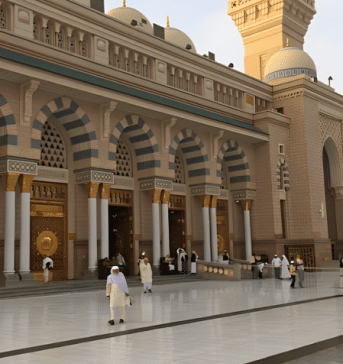 Did you know that every mosque in the Arabian Peninsula has a story behind it? The city of Makkah is home to some of the most magnificent mosques in the world. Listed below are two of the most special yet significant Masjids in Islam:
Did you know that every mosque in the Arabian Peninsula has a story behind it? The city of Makkah is home to some of the most magnificent mosques in the world. Listed below are two of the most special yet significant Masjids in Islam:
Masjid Namirah
Situated in Wadi Uranah, Masjid Namirah marks the site where the Messenger (PBUH) of Allah SWT camped before delivering the Last Sermon on the Arafat plains. Today, during Hajj, the Imam of Masjid Namirah leads the combined congregational prayers of Zuhr and Asr from here and delivers Sermon to the pilgrims.
Masjid Al-Rayah Makkah
Also known as Masjid al-Jowdariyyah, Masjid Al-Rayah was built on the spot where Prophet Muhammad (PBUH) planted his flag after conquering Makkah. However, Masjid Al-Rayah was demolished in 2009.
Summary – Masjid Al-Hudaibiyah
Located on the outskirts of Makkah, Masjid Al-Hudaibiyah marks the site where the truce between Prophet Muhammad (PBUH) and the Quraysh tribe of Makkah was signed. The Treaty of Hudaibiyah played a pivotal role in establishing Islam in the Arabian Peninsula.
The remains of Masjid Al-Hudaibiyah are still present and a new mosque called “Masjid Shumaysi” has been constructed adjacent to it. Both mosques are known as one of the Miqat lines and enable pilgrims to get into the state of Ihram before Umrah and Hajj
Through His Names
New course with
Ustadh Shabbir Hassan




